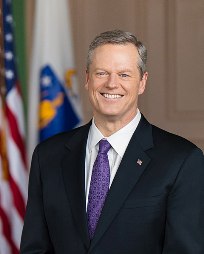The Magnificent Six
Just six governors hail from a different party than their state’s U.S. Senate delegation; 34 governors are from the same party

Recent election cycles have seen an elevated number of single-party congressional delegations and the 116th Congress has the lowest number of states with split U.S. Senate delegations in 60 years (10).
Additionally, there has been an increase in the number of states that are governed by the same party as its U.S. Senate delegation – with that number rising after the 2018 cycle.
Prior to the 2016 election, there were 28 states in which the party of the sitting governor also held both of its U.S. Senate seats:
- 10 were all-Democratic: California, Connecticut, Delaware, Hawaii, Minnesota, New York, Oregon, Rhode Island, Virginia, and Washington
- 18 were all-Republican: Alabama, Arizona, Arkansas, Georgia, Idaho, Iowa, Kansas, Kentucky, Mississippi, Nebraska, North Carolina, Oklahoma, South Carolina, South Dakota, Tennessee, Texas, Utah, and Wyoming
Over the last three years, that number has now grown to 34 states:
- 15 all-Democratic: California, Connecticut, Delaware, Hawaii, Illinois, Michigan, Minnesota, Nevada, New Jersey, New Mexico, New York, Oregon, Rhode Island, Virginia, and Washington
- 19 all-Republican: Alaska, Arkansas, Florida, Georgia, Idaho, Indiana, Iowa, Kentucky, Mississippi, Missouri, Nebraska, North Dakota, Oklahoma, South Carolina, South Dakota, Tennessee, Texas, Utah, and Wyoming
Last November, Democrats flipped the gubernatorial seats of Illinois, Michigan, Nevada (along with a U.S. Senate seat), and New Mexico to unify their control over the three highest-profile political offices in the state. [The party had previously done the same in New Jersey in 2017].
Republicans, meanwhile, added Alaska, Indiana, Missouri, and North Dakota to their tally in 2018 but lost Kansas (with the election of Laura Kelly for governor).
The party also lost unified control of these offices with the defeat of GOP nominees for governor in North Carolina in 2016 (incumbent Pat McCrory) and for U.S. Senate in Alabama’s 2017 special (Roy Moore).
And so there are currently only six states with two U.S. Senators from one party and a governor from another.
Three are governed by a Republican with two Democrats in the senate – all in the Northeast (and all won reelection in 2018):
- Maryland: Governor Larry Hogan and Senators Ben Cardin and Chris Van Hollen
- Massachusetts: Governor Charlie Baker (pictured at top) and Senators Elizabeth Warren and Ed Markey
- New Hampshire: Governor Chris Sununu and Senators Jeanne Shaheen and Maggie Hassan
And three state are governed by a Democrat with two Republicans in the nation’s upper legislative chamber:
- Kansas: Governor Laura Kelly and Senators Pat Roberts and Jerry Moran
- Louisiana: Governor John Bel Edwards and Senators Bill Cassidy and John Kennedy
- North Carolina: Governor Roy Cooper and Senators Richard Burr and Thom Tillis
Democratic pick-ups in gubernatorial races in Kentucky or Mississippi this November could add to that number, but a GOP pickup in Louisiana would subtract from it.
Follow Smart Politics on Twitter.

1. Well, it took quite a while, but FL became the 11th/final state of the ex-confederacy to have TWO senators of the GOP serving concurrently since 1915. Even were Senator Rubio to leave the chamber for whatever reason, the new R governor would surely keep the seat within the party, thus maintaining the monopoly over the “trio”.
2. a) Perhaps the fact that M McSally eventually ended up in the Senate despite her stinging loss to her “pink tutu” D opponent made it easier for her fast-growing yet still midsized state (AZ) to be overlooked? b) If a DEM succeeds in picking up the Martha seat in the ’20 by-election, the Grand Canyon state would join the small group of states with a pair of D senators and a R chief executive – presently all in or near the “Acela Express Corridor”.
3. AK: In a sense, it had 3 Rs in the “trio” even prior to the ’16 balloting – with a former R as governor and an independent (“write-in”) R as senior senator. As for ’20, a non-R stands a decent chance to wrest the Class 2 seat away from the Rs, given the generally fierce competitiveness of its Senate elections after the blowout win of “Ted” Stevens in 2002.
Vermont could be added as a seventh state in this category in spirit if not in letter, as both its senators are members of the Senate Democratic caucus, while its governor is the moderate Republican, Phil Scott. Indeed, Sen. Sanders may temporarily join the Democrats officially (as he did in 2015) if he decides to make a second presidential run.
Vermont last had two senators of one party and a governor of another party in early January 1975, with two Rockefeller Republicans, George Aiken and Robert Stafford, as senators, and Democrat Thomas P. Salmon as governor. (Of course, Aiken was recognized as a leader of northeastern liberal Republicans long before Nelson Rockefeller’s heyday.) But for the entirety of Republican Gov. Jim Douglas’s tenure from 2003 to 2011, Vermont’s senators were both in the Democratic caucus, with Patrick Leahy as a Democrat, and Jim Jeffords and Bernie Sanders as independents.